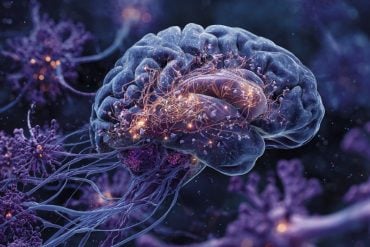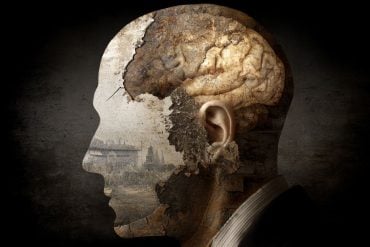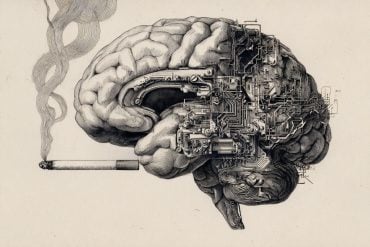Summary: Study reveals how motor memory is consolidated during sleep.
Source: UCSF
When the Golden State Warriors’ Steph Curry makes a free throw, his brain draws on motor memory. Now researchers at UC San Francisco (UCSF) have shown how this type of memory is consolidated during sleep, when the brain processes the day’s learning to make the physical act of doing something subconscious.
The study, published Dec. 14, 2022, in Nature, shows the brain does this by reviewing the trials and errors of a given action. In the analogy, that means sorting through all the free throws Curry has ever thrown, weeding out the memory of all the actions except those that hit the mark, or that the brain decided were “good enough.”
The result is the ability to make the free throw with a high degree of accuracy without having to think about the physical movements involved.
“Even elite athletes makes errors, and that’s what makes the game interesting,” said Karunesh Ganguly, MD, Ph.D., a professor of neurology and member of the UCSF Weill Institute for Neurosciences. “Motor memory isn’t about perfect performance. It’s about predictable errors and predictable successes. As long as the errors are stable from day to day, the brain says, ‘Let’s just lock this memory in.'”
Ganguly and his team found that the “locking in” process involves some surprisingly complex communication between different parts of the brain and takes place during the deep restorative slumber known as non-REM sleep.
Sleep is important because our conscious brains tend to focus on the failures, said Ganguly, who previously identified the sleep-associated brain waves that influence skill retention.
“During sleep, the brain is able to sift through all the instances it’s taken in and bring forward the patterns that were successful,” he said.
Earthbound motor skills wouldn’t work on planet Pandora in ‘Avatar’
It was once thought that learning motor skills only required the motor cortex. But in recent years a more complex picture has emerged.
To look into this process more closely, Ganguly set rats on a task to reach for pellets. Then, the team looked at their brain activity in three regions during NREM sleep: the hippocampus, which is the region responsible for memory and navigation, the motor cortex and the prefrontal cortex (PFC).
First, in a process called “fast learning,” the PFC coordinated with the hippocampus, likely enabling the animal to perceive its motion with respect to the space around it and its location in that space. In this phase, the brain seemed to be exploring and comparing all the actions and patterns created while practicing the task.
Second, in a process called slow learning, the PFC appeared to make value judgments, likely driven by reward centers that were activated when the task was successful. It engaged in crosstalk with the motor cortex and the hippocampus, turning down the signals related to failures and turning up the ones related to successes.
Finally, as the electrical activity of the regions became synchronized, the role of the hippocampus diminished and the instances the brain had noted as rewarding came to the fore, where they were stored in what we call “motor memory.”
While the rats were initially learning the task, their brain signals were noisy and disorganized. As time went on, Ganguly could see the signals synchronizing, until the rats were succeeding about 70 percent of the time. After that point, the brain seemed to ignore mistakes and maintained the motor memory as long as the level of success was stable. In other words, the brain starts to expect a certain level of error and does not update the motor memory.

Just like NBA players, the rats mastered a skill based on a mental model of how the world works, which they created from their physical experience with gravity, space and other cues. But this kind of motor learning wouldn’t easily transfer to a situation where the cues and physical environment were different.
“If all that changed, for example, if Steph Curry was in the world of ‘Avatar,’ he might not look as skilled initially,” Ganguly said.
The best way to break a habit
What if Curry hurt a finger and had to learn to shoot baskets a little differently? The study offered an answer.
“It’s possible to unlearn a task, but to do that, you have to stress the situation to a point where you’re making mistakes,” Ganguly said.
When the researchers made a slight change to the rats’ pellet procurement task, the rats would make more mistakes and the researchers saw more noise in the rats’ brain activity.
The change was small enough that the rats didn’t have to go all the way back to the beginning of their learning, only to the “breaking point,” and relearn the task from there.
But because motor memory becomes ingrained as a set of motions that follow each other in time, Ganguly said, changing motor memory in a complex motion like free throwing a basketball might require changing a motion that is used to initiate the whole sequence.
If Curry usually bounces a basketball twice before he throws, Ganguly said, “It might be best to retrain the brain by bouncing it only once, or three times. That way, you’d start with a clean slate.”
About this memory and sleep research news
Author: Press Office
Source: UCSF
Contact: Press Office – UCSF
Image: The image is in the public domain
Original Research: Open access.
“Cortical–hippocampal coupling during manifold exploration in motor cortex” by Jaekyung Kim et al. Nature
Abstract
Cortical–hippocampal coupling during manifold exploration in motor cortex
Systems consolidation—a process for long-term memory stabilization—has been hypothesized to occur in two stages. Whereas new memories require the hippocampus, they become integrated into cortical networks over time, making them independent of the hippocampus. How hippocampal–cortical dialogue precisely evolves during this and how cortical representations change in concert is unknown.
Here, we use a skill learning task to monitor the dynamics of cross-area coupling during non-rapid eye movement sleep along with changes in primary motor cortex (M1) representational stability.
Our results indicate that precise cross-area coupling between hippocampus, prefrontal cortex and M1 can demarcate two distinct stages of processing.
We specifically find that each animal demonstrates a sharp increase in prefrontal cortex and M1 sleep slow oscillation coupling with stabilization of performance. This sharp increase then predicts a drop in hippocampal sharp-wave ripple (SWR)–M1 slow oscillation coupling—suggesting feedback to inform hippocampal disengagement and transition to a second stage.
Notably, the first stage shows significant increases in hippocampal SWR–M1 slow oscillation coupling in the post-training sleep and is closely associated with rapid learning and variability of the M1 low-dimensional manifold. Strikingly, even after consolidation, inducing new manifold exploration by changing task parameters re-engages hippocampal–M1 coupling.
We thus find evidence for dynamic hippocampal–cortical dialogue associated with manifold exploration during learning and adaptation.






